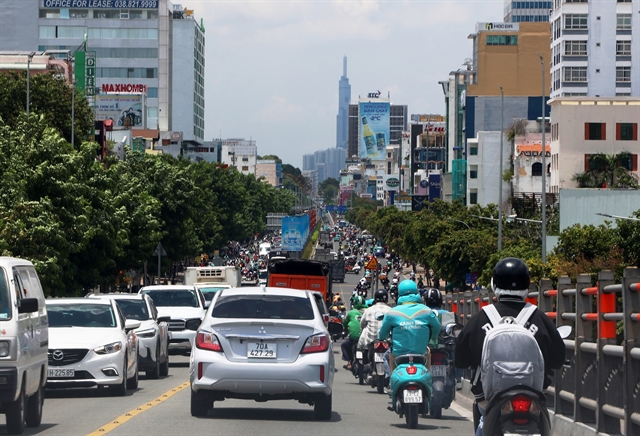 Economy
Economy

 |
| Bad debts will slow next time as macroeconomic factors are supporting the process of handling bad debts. Photo cafef.vn |
HÀ NỘI — Though bad debts increased in the third quarter of this year, it is expected to slow next time as macroeconomic factors are supporting the handling of the debts.
According to banks’ financial reports released recently, many banks, including large-scale banks, recorded an increase in bad debts in Q3 2024.
Specifically, by the end of the third quarter of 2024, State-owned Vietcombank's total amount of subprime debts, doubtful debts and potentially irrecoverable debts increased sharply by 35.8 per cent compared to the beginning of the year, exceeding VNĐ17.1 trillion. The bank’s bad debt ratio also increased from less than 1 per cent at the beginning of this year to 1.22 per cent.
At State-owned VietinBank, the bad debt ratio by the end of the third quarter of 2024 was 1.57 per cent, up from 1.13 per cent at the beginning of this year.
Bad debts at private commercial banks also increased in the third quarter of 2024.
MSB's bad debt ratio at the end of the third quarter was nearly 2.88 per cent of total outstanding debts, a slight increase compared to 2.86 per cent at the end of 2023. Notably, the bank’s potentially irrecoverable debts surged sharply by 66 per cent.
At Techcombank, the bad debt ratio at the end of September 2024 was at 1.35 per cent, up from 1.28 per cent at the end of June. In addition, the bank's bad debt coverage ratio also increased slightly to 103 per cent.
At ACB, total bad debt increased to VNĐ8.27 trillion at the end of the third quarter of 2024, of which potentially irrecoverable debts surged by 55 per cent compared to the beginning of this year to VNĐ6.06 trillion. The bank’s bad debt ratio rose from 1.22 per cent at the beginning of this year to 1.5 per cent at the end of September.
At PGBank, as of the end of the third quarter of 2024, the bad debts was VNĐ1.17 trillion, an increase of 16.6 per cent compared to the beginning of the year. Therefore, the bank’s bad debt ratio increased from 2.85 per cent to 3.19 per cent.
Similarly, at LPBank, bad debts increased by 70 per cent, from nearly VNĐ3.69 trillion to more than VNĐ6.27 trillion, bringing the bad debt ratio to 1.96 per cent.
According to the State Bank of Vietnam (SBV), the main cause of the increase in bad debt in the banking system came from many factors, including unfavourable macroeconomy and natural disasters.
"Bad debt is on the rise, especially after Typhoon Yagi. This is also a problem that the banking industry has to face and needs to have a solution in the coming time," the SBV said.
Notably, the SBV said, the Vietnamese economy is still in the process of recovering from the COVID-19 pandemic and the global economic crisis. Although the Vietnamese Government has introduced many policies to support businesses, the recovery rate is still slow and many businesses are still facing difficulties in restoring production and business activities.
Despite the bad debt increase, experts believe it will slow next time as macroeconomic factors are supporting the process of handling bad debts. Specifically, new amended laws, including the Land Law, the Housing Law and the Real Estate Business Law, which officially took effect from August 2024, will create a boost for the real estate market that will help banks handle collateral (mainly real estate) and recover bad debts.
In addition, under the new amended Law on Credit Institutions, from August 1, 2024, banks will be allowed to transfer all or part of real estate projects as collateral to recover debt. The law also allows expanding the subjects and scope of bad debt trading, including debt purchase from credit institutions and foreign bank branches. This will help thoroughly handle bad debts at many banks. — VNS




